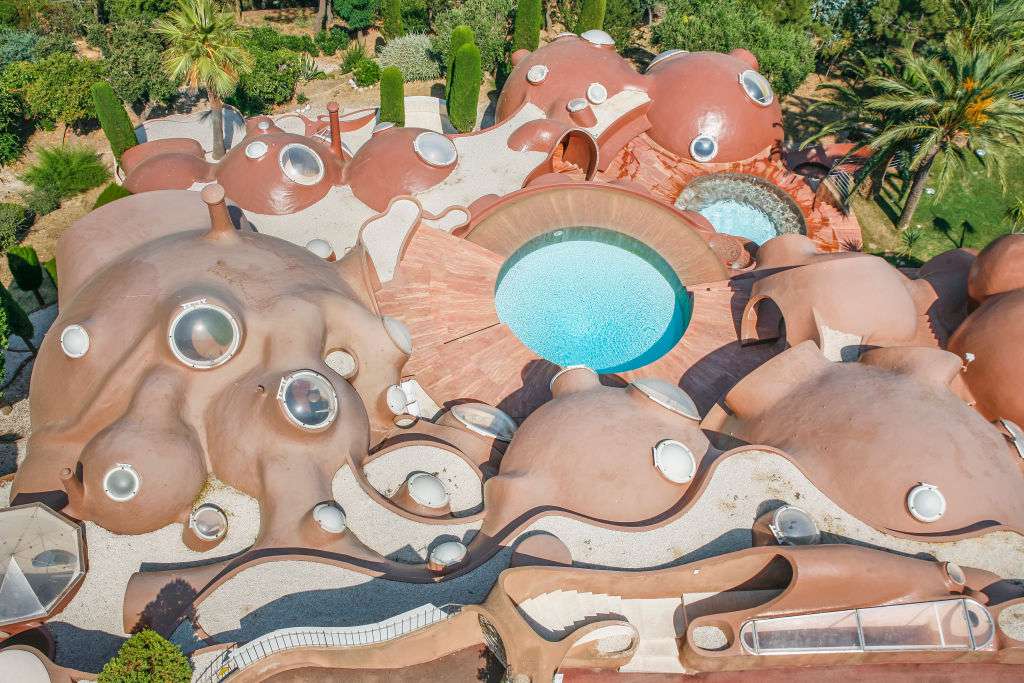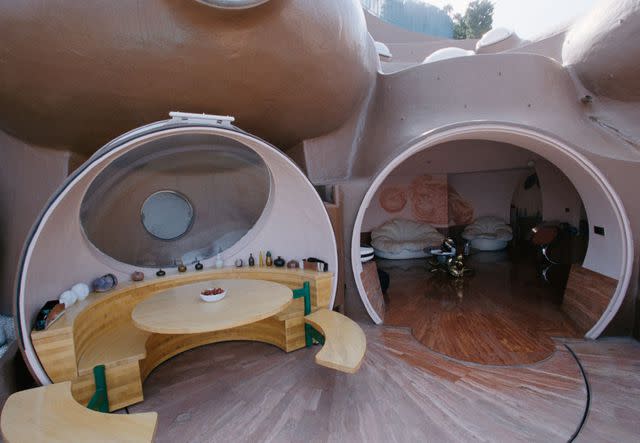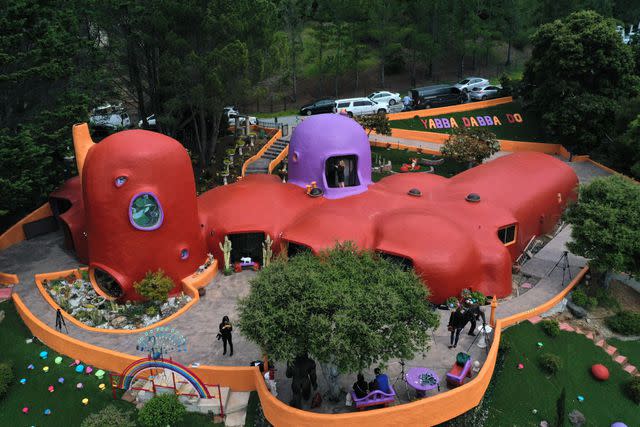Bubble Houses Are Making a Comeback—Here's What You Need to Know

Jean-Patrick DEYA / Getty Images
From squiggly furniture to blob-shaped rugs, it’s clear that curves are making a comeback in design. Bubble houses in particular have been, and continue to be, a fascination when it comes to architecture.
The amorphous structures are instantly eye-catching—and have caught attention across the world since their inception in the 1940s.
Curious to know more? Read on to learn more about the history of this fun architectural style, how bubble homes are made, and the famous ones that still exist today.

FRED TANNEAU / Getty Images
The History of Bubble Houses
Bubble homes, also known as airform homes, were first invented by California architect Wallace Neff. After designing homes for the Hollywood elite, he sought a more affordable housing option during the post-war housing shortage. So, in 1944, the first bubble home came to be.
Neff used a technique called airform—which made it possible to construct the homes quickly; in fact, in just 48 hours.
It’s safe to say bubble homes were part of the modernist movement, which occurred from the 1930s to the 1960s in the United States.
The era was defined by the abandonment of overly lavish interiors, emphasizing the functionality of design.
Bubble homes fit the bill: they were inexpensive to build since they involved minimal construction and they were made of gunite, a material that could theoretically last for decades since it is twice as strong as concrete.
The idea of bubble houses started to grow in popularity and eventually made its way overseas in later decades—with notable homes built in France, Austria, and the Netherlands by various designers.

Eric Robert / Getty Images
Key Features of Bubble Houses
Bubble houses were initially made through a process called airform. Using this technique, builders pour concrete into a circular disk to act as the home’s foundation. Then, a dome-shaped balloon is inflated on top of it.
Gunite, a mixture of water and dry cement, is poured on top of the balloon, which is later deflated once the gunite is dried. The result? Blob-shaped homes that are made in lightning-quick time.
Today, bubble homes don’t necessarily have to be constructed through this process. They refer to any home that has an amorphous, blob-like shape.
Some are still made through airform, while other modern versions are simply inspired by the geodesic structure. Typically, bubble houses have a dome-like shape with no vertical or horizontal walls.

Justin Sullivan / Getty Images
Bubble Houses Today & Notable Buildings
There’s certainly a renewed interest in bubble homes with the proliferation of curves in the design zeitgeist. However, the viral interest isn’t likely to make its way into mundane reality, as bubble homes don’t make for the best living quarters.
Because of the lack of straight walls, homeowners found it challenging to furnish the homes and carve out private spaces when they were initially constructed. Many of Neff’s original bubble houses have been torn down as a result. However, the bubble home he lived in until his passing in Pasadena, California still exists.
Still, the impact of bubble homes in media and more creative global architecture persists. Barbie’s Dreamhouse and the dome-topped mansion in “Glass Onion: A Knives Out Mystery” are prime examples of bubble houses’ influence on the idea of futuristic architecture.
Plus, several notable bubble houses across the world exist—and continue to be built.
The expansive Palais Bulles in France is one of the most famous, built for Pierre Bernard in 1984 as a way for the round structure to allow the bodies and ideas inside it to similarly flow freely.
The experimental Bolwoningen houses in the Netherlands and the colorful Flintstone House in California also stand today, both built around the 1970s. The prolific homes continue to attract eyes and visitors to their premises year-round.
Most recently, the Sphere at the Venetian in Las Vegas was constructed—a massive ball-shaped building wrapped in video screens, so that it can look like a planet or even a giant eyeball.
These ever-evolving forms of bubble houses are proof that the architectural style isn’t going anywhere—a testament to Neff’s revolutionary design style and the power of curves.
Read the original article on The Spruce.

